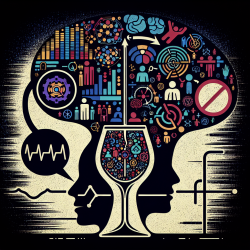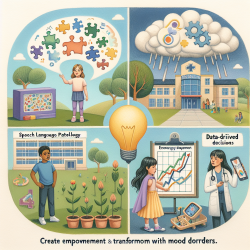Unlocking Potential: The Power of Color and Sound in Speech Therapy
In the quest to enhance speech therapy outcomes for children, leveraging innovative research can be a game-changer. A study titled "The influence of colour and sound on neuronal activation during visual object naming" provides groundbreaking insights into how color and sound can influence neuronal activation, offering a new perspective for speech-language pathologists.
The Research: A Brief Overview
The study, conducted by Hocking and Price (2008), explored how the addition of color and sound influences neuronal activation during the process of visual object naming. It was found that both color and sound cues increased activation in bilateral occipital regions and the right anterior fusiform gyrus. Interestingly, the addition of color reduced activation in the left antero-medial temporal cortex, suggesting facilitated object recognition when color and form are integrated.
Implications for Speech Therapy
For practitioners at TinyEYE, these findings can be instrumental in refining therapy techniques. Here’s how:
- Enhanced Visual Cues: Incorporating color into visual aids can facilitate faster object recognition and naming. This is particularly useful in sessions where children struggle with distinguishing between similar objects.
- Multimodal Integration: Combining auditory cues with visual stimuli can potentially increase engagement and improve naming accuracy, although the study suggests color has a more significant impact than sound.
- Targeted Interventions: Understanding the neuronal basis of these enhancements allows for more targeted interventions, focusing on areas of the brain that benefit most from these stimuli.
Encouraging Further Exploration
While this study provides a solid foundation, further research is encouraged to explore the long-term effects of integrating color and sound in speech therapy. Practitioners are urged to document their findings and share insights, contributing to a broader understanding of effective therapy techniques.
By adopting a data-driven approach and leveraging these insights, TinyEYE practitioners can enhance therapy outcomes, ultimately unlocking the potential of every child they work with.
To read the original research paper, please follow this link: The influence of colour and sound on neuronal activation during visual object naming.










